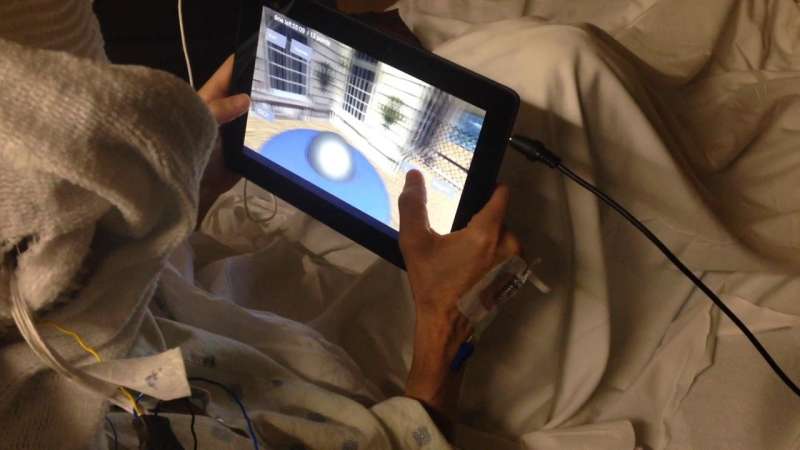Credit: University of Texas at Austin
Zoltan Nadasdy, a neuroscientist at The University of Texas at Austin, wanted to understand how grid cells in the brain help orient us in the world. He had been studying spatial memory in the animal brain for years when he first had the opportunity to study spatial cognition, sometimes call the "GPS of the mind," in human subjects.
Doctors from University Medical Center Brackenridge (now UT's Dell Seton Medical Center) in Austin, Texas, were monitoring individuals with epilepsy to localize the sources of seizures. The patients were wired with electrodes in their brain, but the doctors were only using a small fraction of the data gathered.
Most of the time the patient's brain showed normal activity which wasn't relevant to the epilepsy study, but Nadasdy realized this was a golden opportunity to explore how the human brain processed information. He requested permission to work with these patients and began exploring a range of phenomena— some related to epilepsy, others related to everyday experiences.
In particular, he wanted to know whether the grid cells which allowed rats to have keen spatial awareness also operated in human brains?
However, his subjects could not move freely, so to test their spatial processing, he developed a video game where individuals moved around a virtual space. The first iteration used a tablet computer, but more recently Nadasdy has been developing a VR version of the game.
"With virtual reality, participants don't need to leave the bed. I can just put an Oculus on them and they play the game," Nadasdy said. "These games are so immersive that they emulate the real navigation experience."
Staff from Texas Advanced Computing Center (TACC) at UT Austin helped Nadasdy fine-tune his VR experiments. He tested the prototype VR in the TACC Visualization Laboratory with a class of students who were able to view and offer feedback on the tool. Data from the experiment was analyzed on TACC's powerful high-performance computers.
His experiments showed that, though similar, grid cells in human brains work in subtly different ways from those in rats. Whereas both orient oneself by mapping the surrounding space and placing the individual relationally, like a personalized Google Map, grid cells in the human brain relate to the scale of the area—differentiating small, indoor spaces from large, outdoor ones. In general, the human brain adapts to the spatial context of the environment better than the rodent brain does.
Nadasdy is currently working to develop a VR scuba-diving experience to determine whether grid cell mapping is two-dimensional or three-dimensional. He envisions a range of VR-based experiments that explore the mind in ways that normal experiments cannot by replacing the laboratory with VR.
"What if I switch your environment from one second to another?" he asked. "You're in the office and then one second later, you're at the Giza pyramids. How does the brain adjust? We could never do this experiment in the real world, but with VR we can easily make all sorts of transformations and test how the brain adjusts to those changes."
Provided by University of Texas at Austin






















